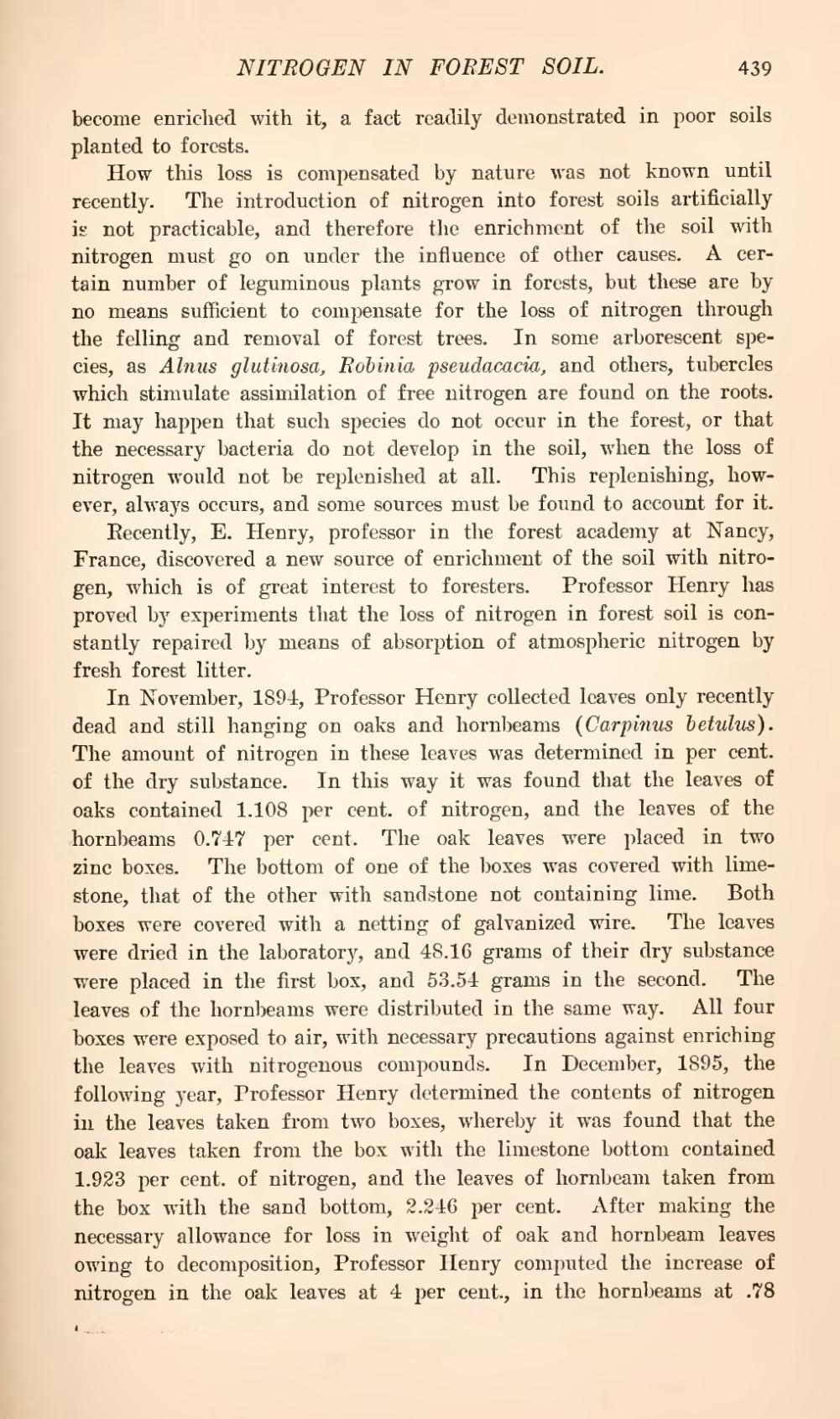become enriched with it, a fact readily demonstrated in poor soils planted to forests.
How this loss is compensated by nature was not known until recently. The introduction of nitrogen into forest soils artificially is not practicable, and therefore the enrichment of the soil with nitrogen must go on under the influence of other causes. A certain number of leguminous plants grow in forests, but these are by no means sufficient to compensate for the loss of nitrogen through the felling and removal of forest trees. In some arborescent species, as Alnus glutinosa, Robinia pseudacacia, and others, tubercles which stimulate assimilation of free nitrogen are found on the roots. It may happen that such species do not occur in the forest, or that the necessary bacteria do not develop in the soil, when the loss of nitrogen would not be replenished at all. This replenishing, however, always occurs, and some sources must be found to account for it.
Eecently, E. Henry, professor in the forest academy at Nancy, France, discovered a new source of enrichment of the soil with nitrogen, which is of great interest to foresters. Professor Henry has proved by experiments that the loss of nitrogen in forest soil is constantly repaired by means of absorption of atmospheric nitrogen by fresh forest litter.
In November, 1894, Professor Henry collected leaves only recently dead and still hanging on oaks and hornbeams (Carpinus betulus). The amount of nitrogen in these leaves was determined in per cent. of the dry substance. In this way it was found that the leaves of oaks contained 1.108 per cent, of nitrogen, and the leaves of the hornbeams 0.747 per cent. The oak leaves were placed in two zinc boxes. The bottom of one of the boxes was covered with limestone, that of the other with sandstone not containing lime. Both boxes were covered with a netting of galvanized wire. The leaves were dried in the laboratory, and 48.16 grams of their dry substance were placed in the first box, and 53.54 grams in the second. The leaves of the hornbeams were distributed in the same way. All four boxes were exposed to air, with necessary precautions against enriching the leaves with nitrogenous compounds. In December, 1895, the following year, Professor Henry determined the contents of nitrogen in the leaves taken from two boxes, whereby it was found that the oak leaves taken from the box with the limestone bottom contained 1.923 per cent, of nitrogen, and the leaves of hornbeam taken from the box with the sand bottom, 2.246 per cent. After making the necessary allowance for loss in weight of oak and hornbeam leaves owing to decomposition, Professor Henry computed the increase of nitrogen in the oak leaves at 4 per cent., in the hornbeams at.78
